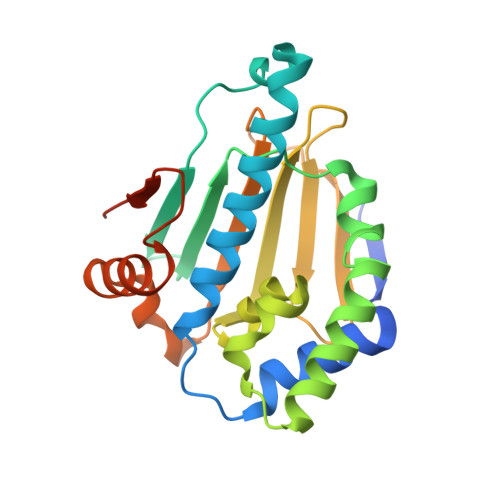Protein conformational flexibility modulates kinetics and thermodynamics of drug binding.
Amaral, M., Kokh, D.B., Bomke, J., Wegener, A., Buchstaller, H.P., Eggenweiler, H.M., Matias, P., Sirrenberg, C., Wade, R.C., Frech, M.(2017) Nat Commun 8: 2276-2276
- PubMed: 29273709
- DOI: https://doi.org/10.1038/s41467-017-02258-w
- Primary Citation of Related Structures:
5J20, 5J27, 5J2V, 5J2X, 5J64, 5J6L, 5J6M, 5J6N, 5J80, 5J82, 5J86, 5J8M, 5J8U, 5J9X - PubMed Abstract:
Structure-based drug design has often been restricted by the rather static picture of protein-ligand complexes presented by crystal structures, despite the widely accepted importance of protein flexibility in biomolecular recognition. Here we report a detailed experimental and computational study of the drug target, human heat shock protein 90, to explore the contribution of protein dynamics to the binding thermodynamics and kinetics of drug-like compounds. We observe that their binding properties depend on whether the protein has a loop or a helical conformation in the binding site of the ligand-bound state. Compounds bound to the helical conformation display slow association and dissociation rates, high-affinity and high cellular efficacy, and predominantly entropically driven binding. An important entropic contribution comes from the greater flexibility of the helical relative to the loop conformation in the ligand-bound state. This unusual mechanism suggests increasing target flexibility in the bound state by ligand design as a new strategy for drug discovery.
- iBET - Instituto de Biologia Experimental e Tecnológica, Oeiras, 2780-157, Portugal. marta.amaral@sanofi.com.
Organizational Affiliation:

















